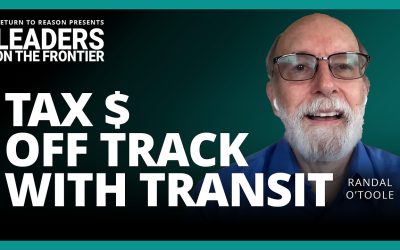Introduction
 While many jurisdictions have experimented with government-owned businesses throughout their history, few have the kind of enduring attachment to public enterprise that Saskatchewan does. Crown corporations are government controlled and government owned by definition, and so the ultimate public policy issue that surrounds them is whether government ownership should continue.
While many jurisdictions have experimented with government-owned businesses throughout their history, few have the kind of enduring attachment to public enterprise that Saskatchewan does. Crown corporations are government controlled and government owned by definition, and so the ultimate public policy issue that surrounds them is whether government ownership should continue.
View entire study as PDF (24 Pages)
This paper does not call for continued government ownership, or for privatization. Instead, it examines common claims made about the Crowns as they stand, using the model of what we will call the Crown corporation three-way compromise. The three-way compromise acknowledges that like all businesses, Crown corporations are the meeting point for people playing three distinct roles: the customer, the investor and the employee.
These three roles conflict with one another in any business, including Crown corporations. Investors would like to increase their returns at the expense of a poorer deal for either the customers or the employees. Customers would like the employees to work harder for less or the investors to provide more capital for lower returns (or both), so that they might get better services at lower prices. Employees, for their part, would like to improve their remuneration and conditions at the expense of the other two.
As will be argued, unless the overall productivity of the corporation in question is better than the productivity in equivalent corporations elsewhere, the Crown model cannot be claimed to deliver better than average returns to all three parties simultaneously.
This is particularly important when considering that the three parties are the same people, the people of Saskatchewan.
While the three roles of investor, customer and employee may be distinct, the Crown corporation model means that each individual in Saskatchewan fulfills one, two and sometimes all three of these roles. As taxpayers, they own the capital investment with which Crown corporations operate. As customers, they consume the various products and services that Crowns provide. As employees, some 11,703 people work to provide those products and services through the 11 Crown corporations directly controlled by the Crown Investments Corporation.1
No matter how obvious the three-way compromise may be, acknowledging it should be of more than passing interest. If it is true that the roles are inevitably in conflict, Saskatchewan politicians have been able to juggle pressure from all three in recent years without acknowledging that a conflict exists. Whether or not one supports continued public ownership of Crown corporations, it makes sense to have a consistent view of which people in which roles benefit the most and by how much from their involvement in Crown corporations. What is not consistent is to focus on different benefits at different times and pretend it is possible to have one’s cake and eat it, too.
 While many jurisdictions have experimented with government-owned businesses throughout their history, few have the kind of enduring attachment to public enterprise that Saskatchewan does. Crown corporations are government controlled and government owned by definition, and so the ultimate public policy issue that surrounds them is whether government ownership should continue.
While many jurisdictions have experimented with government-owned businesses throughout their history, few have the kind of enduring attachment to public enterprise that Saskatchewan does. Crown corporations are government controlled and government owned by definition, and so the ultimate public policy issue that surrounds them is whether government ownership should continue. 

